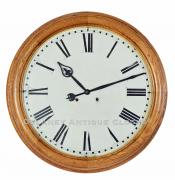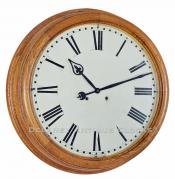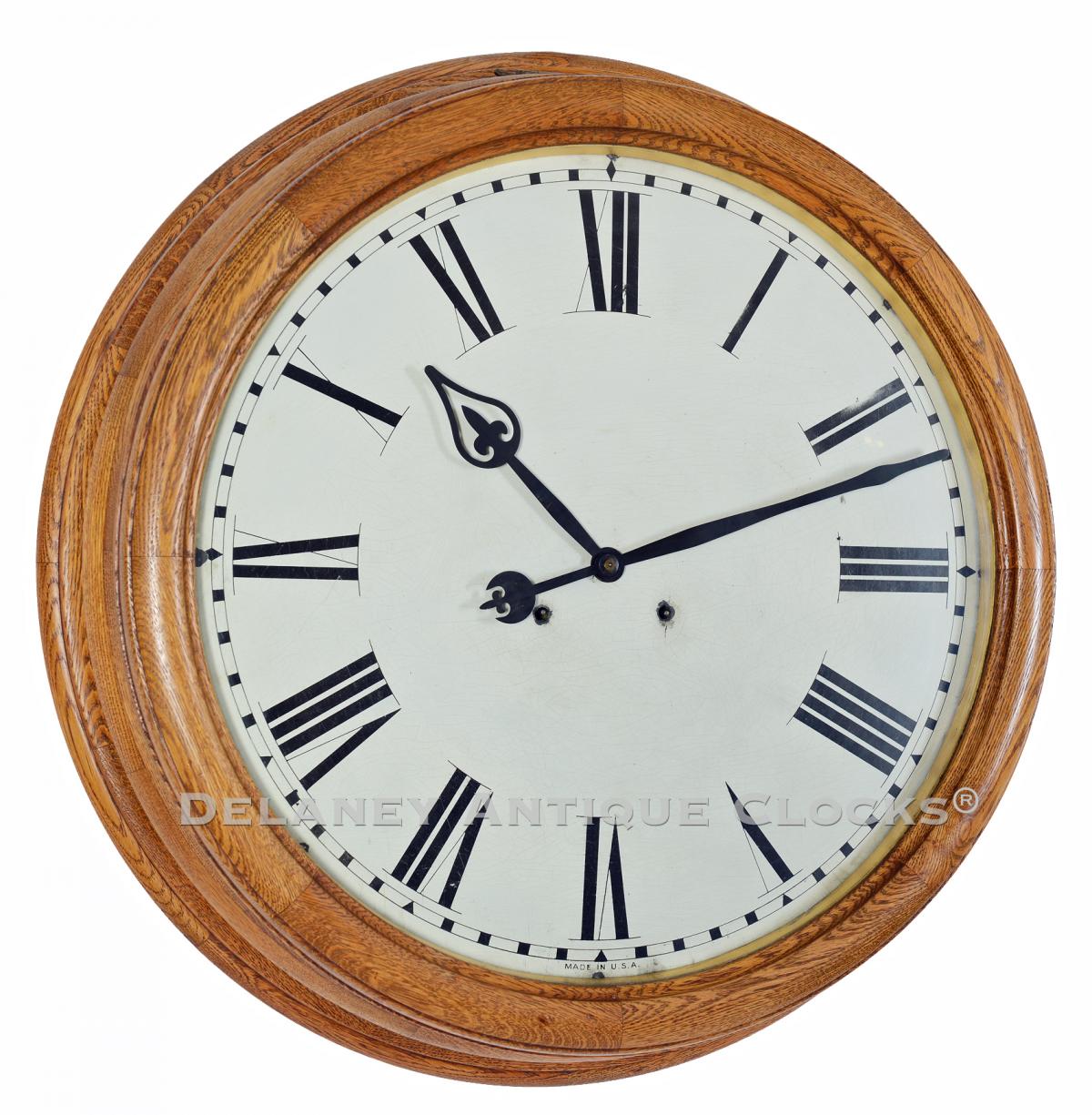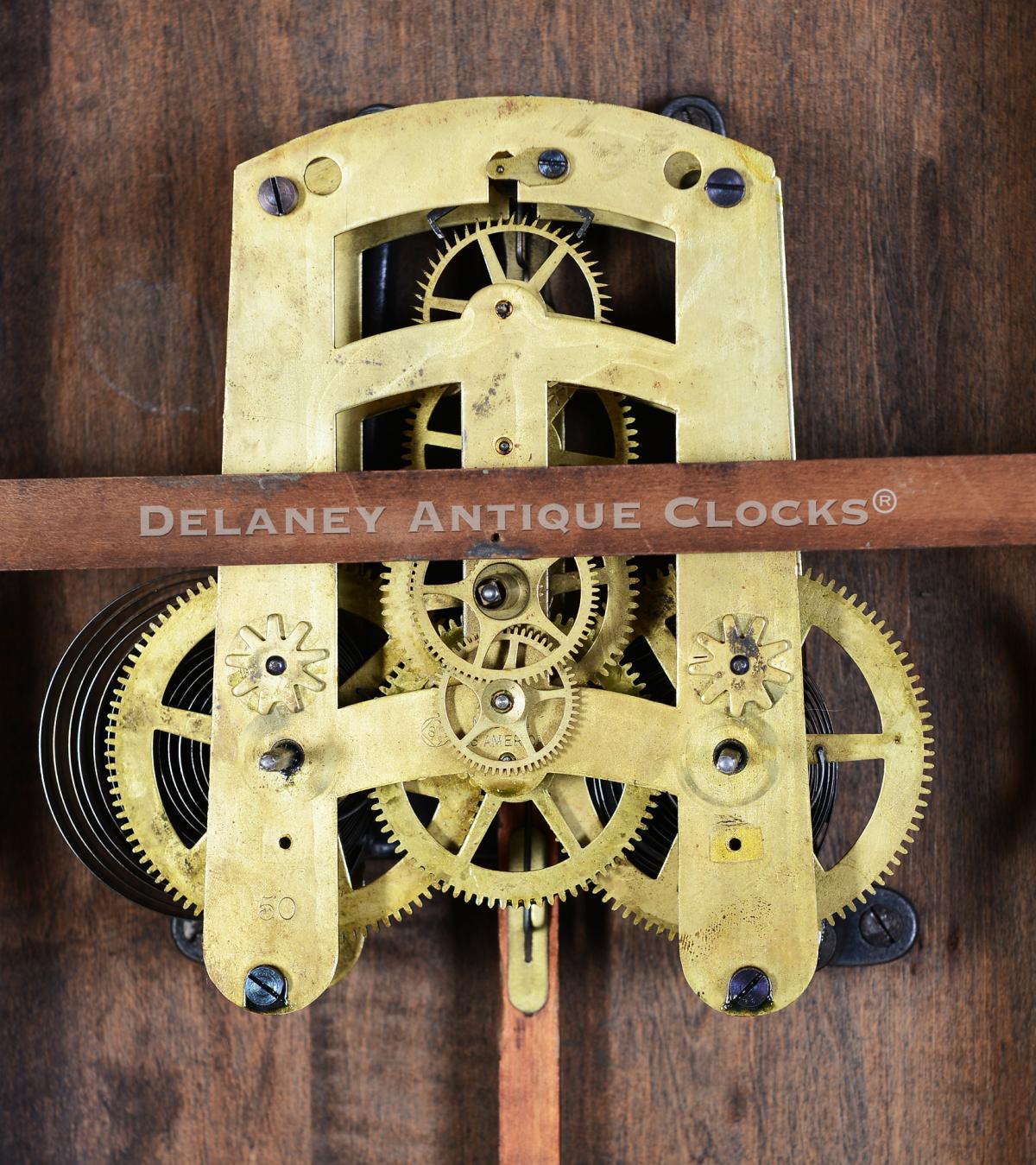Seth Thomas “GALLERY 24-INCH.” This is the Big One. 223290.
This large oak case example can be difficult to find in excellent condition. This desirable model was made by the Seth Thomas Clock Company, offered in their catalogs as early as 1884, and is cataloged as the “GALLERY 24-INCH.” This is the largest gallery clock the Seth Thomas Clock Company offered, measuring 32 inches in diameter with a 24” dial. Large dial gallery clocks as big as this one are seldom seen. These impressive models were originally made for public buildings such as retail stores, banks, depots, or offices. Its grand size makes it easy to see from a distance.
The circular-shaped case is constructed of oak. The current finish is a pleasing honey color. The back of the case measures 32 inches in diameter. A series of shaped moldings taper inwards, framing the dial. The shaping of this case makes for an exciting presentation from all viewing angles. These moldings make up the sides of the case and terminate in a rounded bezel fitted with glass. The front is hinged at the top and opens as a door.
The dial is painted on zinc and measures 24 inches in diameter. This dial is original to this clock and is in very good original condition. Roman-style numerals mark the hours around a closed minute ring. Diamond-shaped markers are positioned at the quarter-hour positions. Both hands are steel and are a traditional Seth Thomas form. The minute hand is counterbalanced due to its length.
The time-only movement is a double-spring design. Both springs power this clock for thirty days before it needs to be rewound. The brass movement features a Graham deadbeat escapement and Geneva winding stops. (The winding stops will be restored when the clock is serviced.) The works are mounted to an iron bracket. The bracket is secured to the back of the case. The pendulum hangs behind the movement. A wooden rod supports a brass-faced bob.
This clock was made in the U.S.A. circa 1890.
Inventory number 223290.
Seth Thomas was born in Wolcott, Connecticut, in 1785. He was apprenticed as a carpenter and joiner and worked building houses and barns. He started in the clock business in 1807, working for clockmaker Eli Terry. Thomas formed a clock-making partnership in Plymouth, Connecticut, with Eli Terry and Silas Hoadley as Terry, Thomas & Hoadley. In 1810, he bought Terry's clock business, making tall clocks with wooden movements. Seth chose to sell his shares in the partnership in 1812, moving in 1813 to Plymouth Hollow, Connecticut, where he set up a factory to make metal-movement clocks. In 1817, he added shelf and mantel clocks. By the mid-1840s, He successfully transitioned to brass movements and expanded his operations by building a brass rolling mill and a cotton factory. In 1853, He incorporated the business but continued to be the majority shareholder. This clock business expanded until it became one of the "BIG Seven" in Connecticut. Their product line had offerings that competed at every price point, from kitchen clocks to precision regulators. Seth Thomas died in 1859. The community of Plymouth Hollow so revered him that they changed the name on July 6, 1875, to Thomaston in his honor. After his death, his son, Aaron, took over the company's leadership. Aaron is credited with increasing the business by adding a number of new case styles and improving production methods. The company went out of business in the 1980s.






